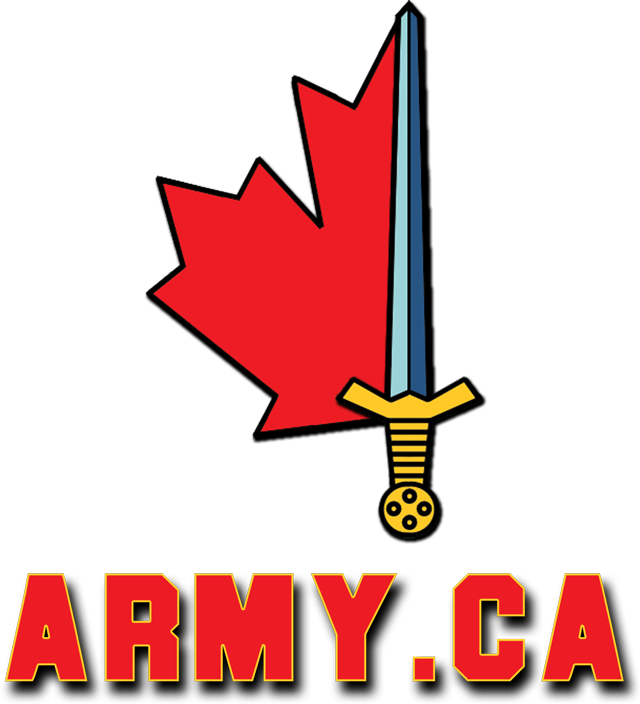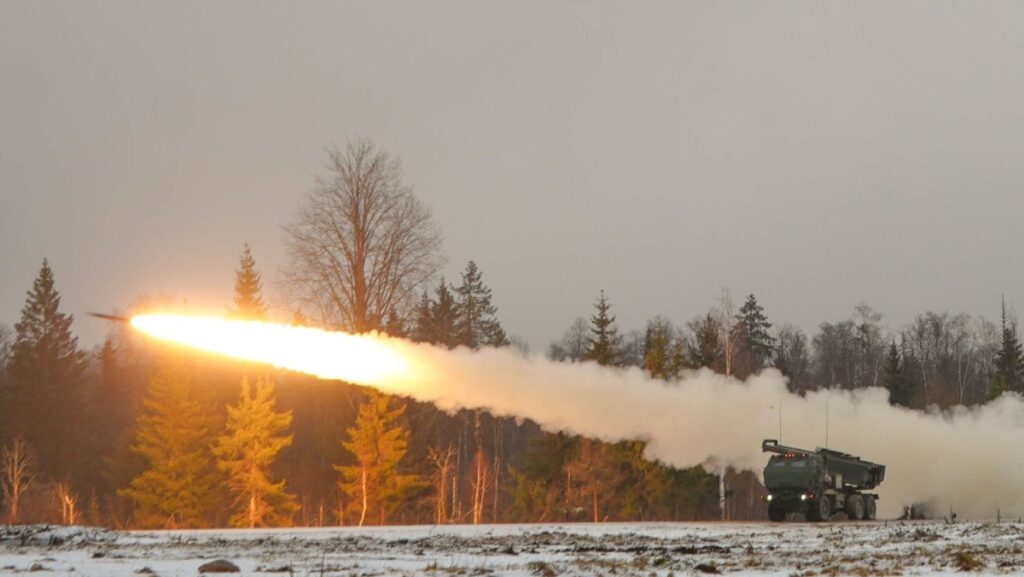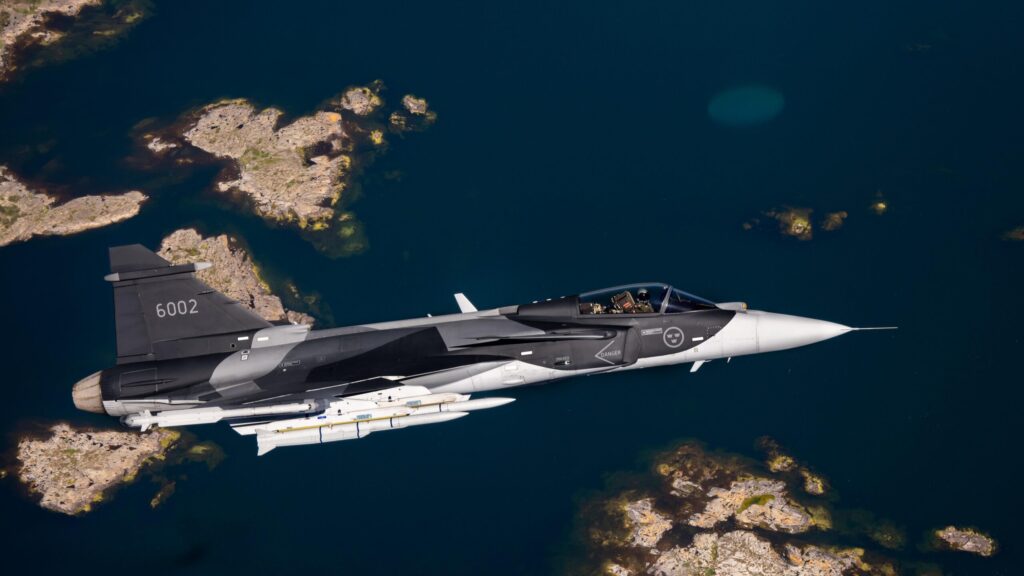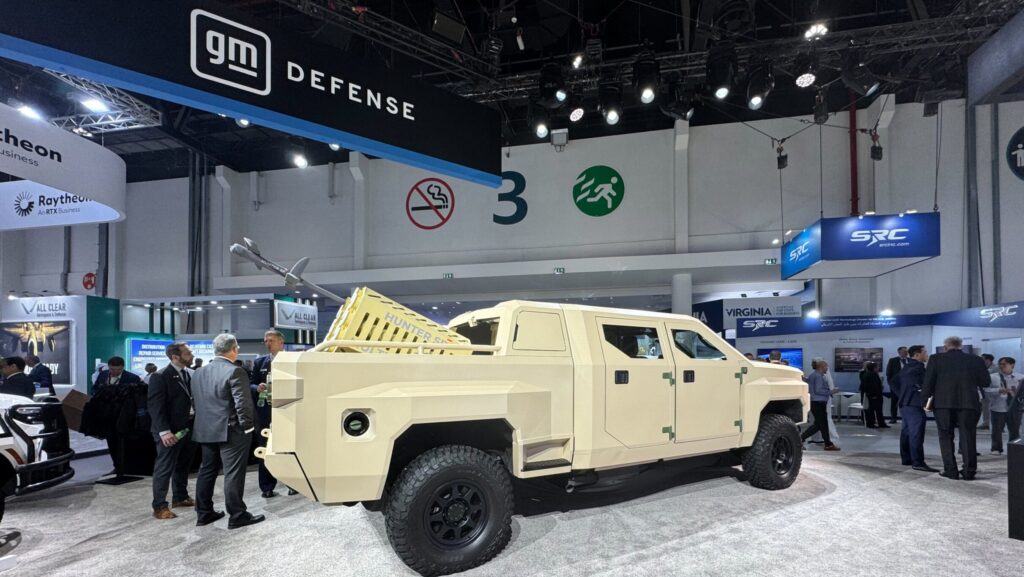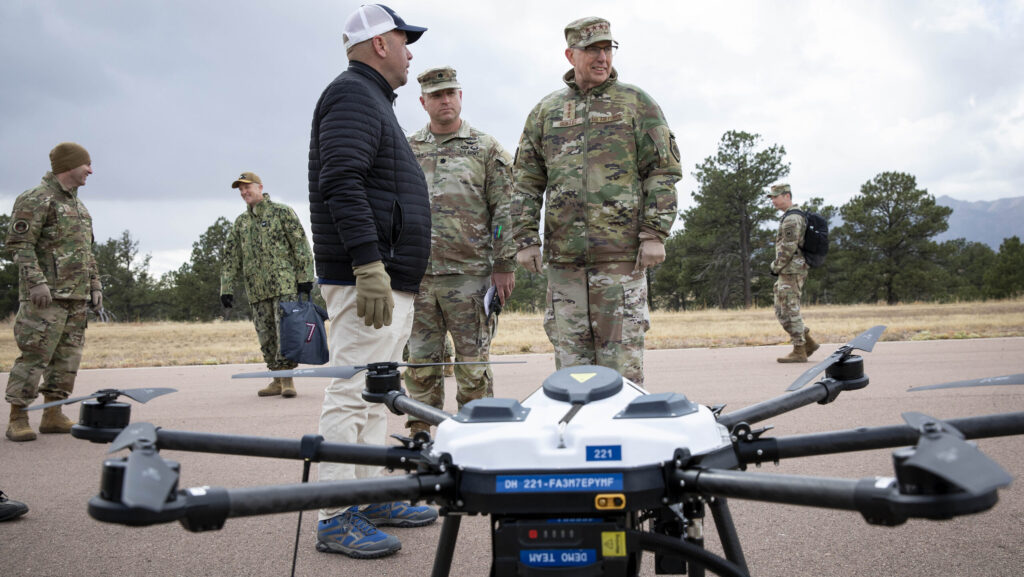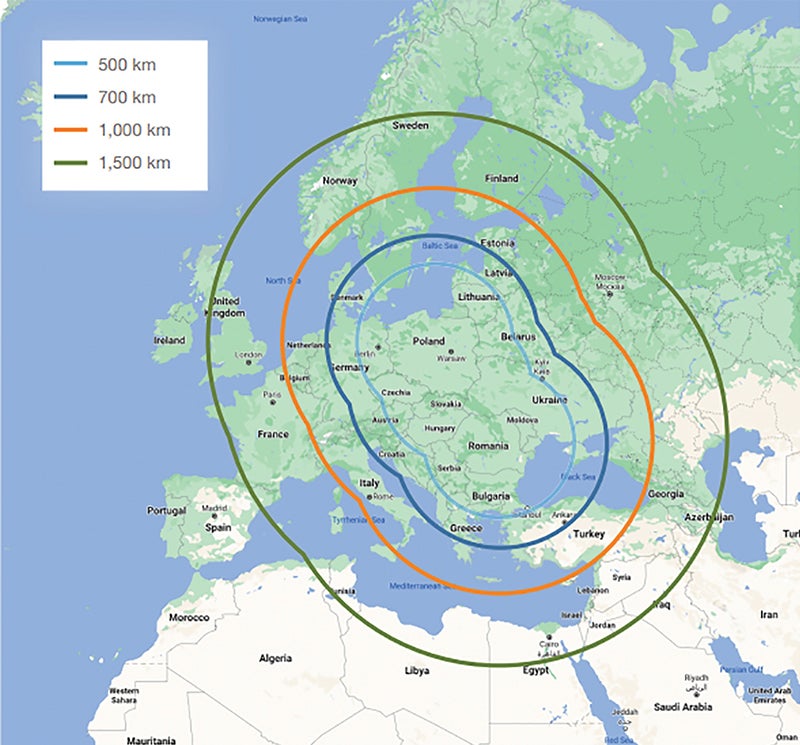It doesn't need to be in the RFI as the M777 is an existing capability while the RFI calls for a new capability. That said, the RFI does give a strong hint that the M777s will be divested as a consequence of this project. That's clearly something I disagree strongly with.
Comparing is difficult as there are numerous factors at play. Everything is effects based and varies with target posture. For example, the original four gun 105mm troop was based on three guns being able to effectively neutralize a platoon indefinitely at their standard rate of fire. The fourth gun was in essence a spare to allow one gun in the troop to be out of action for whatever reason. Two troops in a battery neutralized the front two platoons of a company and so on.
Yes, we practiced MRSI by hand back in the 70s, but it was more an experimental fad than something we did regularly. It has value against a target that is in an open posture where a first round volley is highly effective. I.e. the more rounds that can land simultaneously while troops are standing in the open and before they can hit the ground, the better. Six guns firing a 3-round MRSI each can deliver an 18 round simultaneous volley. But, it has little value after that. After that you either fire precision rounds to knock out small targets like a bunker or vehicle, or you deliver neutralization for whatever time interval is required. MRSI has little value in doing that.
Believe me this is not the CA field artillery shop's thinking as to the M777s. It is the army writ large and the VCDS shop that comes up with these ideas based on bean counter criteria. The countervailing issues here are: how much more would it cost per annum to run five M777 equipped batteries compared to five batteries having no equipment or equipped with 120mm or 81mm mortars versus what are the chances we'll be in deep shit at some point in the future if we do not have five M777 batteries ready to go? The VCDS solution for decades now has been to kick the lack of a capability issue down the road hoping that it never becomes time to pay the piper.
Within the gunner community, the issue is split. There are those who buy the bean counter arguments while others, like me, think that it is stupid to have serviceable guns being divested while ARes units are unequipped for war.
That's an interesting concept. I figured the LAV 700 wouldn't be brutish enough for the AGM turret. It would be interesting to see the ten-wheel one in practice as I'm still unconvinced that AGM on Boxer is a good solution. The Brits obviously think otherwise. I'd prefer a tracked chassis to properly absorb the recoil shock and provide stability (the rough terrain capability is of secondary interest to me) but if a 10-wheel LAV can handle it, and be relatively compatible to our ACSV fleet (an AGM also need a heavier engine) then I'd accept it.
I've done that in rough form and can throw out a napkin diagram in a few days. In short the RCA (RegF and ARes combined) could man all the new SPs, new air defence, new LRPR and old M777s in two brigades as follows:
A. Mech divisional Support Arty Bde:
1) 3 X SP close support regiments each with three times SP batteries (56 guns total - 18 RegF, 36 ARes) and one GS battery (appx 12 loitering munition launchers and STA - ARes) - one regiment for each of three mechanized brigades (I've notionally designated these as 7 Tor Regt [Toronto], 20 Fd Regt [Edmonton/BC] and 56 Fd Regt [London/Brandtford/Hamilton/Guelph]);
2) 1 X GS LRPR regiment of three times LRPR batteries (18 launchers total - 6 RegF, 12 ARes) and one times STA battery (MRRs, SUAVs and HALO acoustic ranging - 1/3 RegF, 2/3 ARes) - general support to any deployed field force (I've notionally designated this as 26 Fd Regt [Shilo/Brandon/Regina]);
B. General Support Arty Bde:
1) 1 X M777 close support regiment with three times M777 batteries (18 guns total - 12 RegF, 6 ARes); one GS battery (appx 12 loitering munitions launchers and STA - appx 2/3 RegF, 1/3 ARes); one VLLAD AD Bty (appx 12 launchers - 2/3 RegF, 1/3 ARes) - to support a light predominantly RegF standing quick reaction bde (I've notionally designated this as 1 RCHA [Petawawa/Ottawa/Pembroke]) ;
2) 1 X AD Regt with three times AD batteries (2 X RegF, 1 X ARes); one VLLAD battery (appx 12 launchers - 1/3 RegF, 2/3 ARes) to support, in whole or in part, an army deployed contingent in general (I've notionally designated this as 4 AD Regt [Gagetown/Halifax/St John]);
3) 1 X SP close support regiments each with three times SP batteries (18 guns total - 6 RegF, 12 ARes) and one GS battery (appx 12 loitering munition launchers and STA - ARes) one VLLAD battery (appx 12 launchers - 1/3 RegF, 2/3 ARes) - to support a predominantly ARes mechanized brigade or provide general support reinforcing to other units (I've notionally designated this as 6 Fd Regt [Valcartier, Quebec City/Shawinigan/Levis]); and
4) 1 X general support regiment with two times SP batteries and one M777 battery (12 SP guns - 6 RegF, 6 ARes, 6 M777 - ARes) one GS battery (appx 12 loitering munition launchers and STA - ARes) one VLLAD battery (appx 12 launchers - 1/2 RegF, 1/2 ARes) - to support a predominantly ARes light bde or to provide general support reinforcing to other units(I've notionally designated this 2 Fd Regt [Montreal])
C. Notes:
1) There is an additional bill for two hybrid artillery brigades (37 CAB [Montreal]) and 38 CAB [Winnipeg]) and two hybrid artillery brigade service battalions.
2) in total there are 7 X field and 1 X air defence regiments containing a total of 35 batteries as follows:
3) The PY and PT numbers crunch out to roughly those of the current RegF field force PY strength of roughly 2,200 and the authorized RCA 3,200 (inclusive of assigned gunners and support trades). I need to do some more fine tuning. I don't believe in FTEs. Its not in the NDA - you're either RegF (FT/PY) or ARes (PT);
- 14 X SP batteries (84 guns total - 30 guns in 5 X RegF and 54 guns in 9 X ARes batteries) - 7 to Latvia, 7 to RCAS, 1 Tech Ref gun;
- 4 X M777 batteries (24 guns total - 12 guns in 2 X RegF and 12 guns in 2 X ARes batteries) - 7 war stock, 1 Tech Ref gun;
- 6 X general support batteries (appx 72 launchers - 12 launchers in 1 X RegF battery and 60 launchers in 5 X ARes batteries - note these batteries also contain some LCMRs, HALO and MUAVs) - none unallocated at this point;
- 3 X LRPR batteries (18 launchers total - 6 launchers in 1 X RegF and 12 launchers in 2 X ARes batteries) - none unallocated at this point;
- 1 X STA battery (appx 10 X MRR; 2 X SUAV launchers, 2 X HALO acoustic ranging systems - 1 X hybrid battery) - none unallocated at this point;
- 3 X AD batteries (appx 36 X launchers - 24 in 2 X RegF and 12 in 1 X hybrid ARes batteries) - none unallocated at this point; and
- 4 X VLLAD batteries (appx 48 X launchers - 12 in 1 X RegF and 36 in 3 X hybrid ARes batteries) - none are unallocated at this point.
4) There is a level of expandability in the structure - for example, a single CS regiment can form the nucleus of a new CS arty brigade to be filled out with new equipment and newly recruited personnel. It has sufficient equipment and trained personnel to train newly recruited personnel until such time as newly acquired equipment arrives;
5) Note that there are no VLLAD batteries in the divisional CS regts (7 Tor, 20 Fd and 56 Fd). The intent is that in the unlikely intent that these brigades/division need to deploy in large scale, all AD resources come from 4 AD Regt. I'm still mulling this over to see if we can or should provide more organic AD resources to 1 Div.
I agree with that - 1/3 on tiered readiness status; 2/3 on tiered reserve status.
Agree with 90% of what you say except for the "packing grease" part. Some should be kept in a war reserve, but mostly guns which are kept "in reserve" should be in the hands of reserve units where they can contribute to training while still receiving maintenance and low usage rates and thus be able to be brought forward with fully trained replacement crews as needed.
That really goes without saying.
With this level of acquisition on this project (and assuming we do not divest the M777 and assuming that we give all the mortars to the infantry, there is no reason why the Cdn artillery - both RegF and ARes cannot be organized into fully equipped functioning units. Yes, it requires "sorting out" and, IMHO, to not do so and to keep the current ARes structure is simply professional negligence on the part of the army, artillery and VCDS leadership.

It's great that you have thought this through. But I'm going to bet money that an organization like this won't pass.
1) The high level of Reg/Res interdependence makes deployment above battery size difficult. Presumably, the CA will want the flexibility to rotate entire regiments.
2) High value low density assets are not going to the Reserves simply because they need to be tightly controlled with higher readiness than peers.
3) Modern information flow, including JADC2 ideas, make the concept of an artillery brigade outside division sized manœuvre obsolete (at least for us). Long range fires have to be tightly coupled with long range collectors. Moreover, long range kinetic strike is just one of the options for effects. That's why the Americans came up with this:
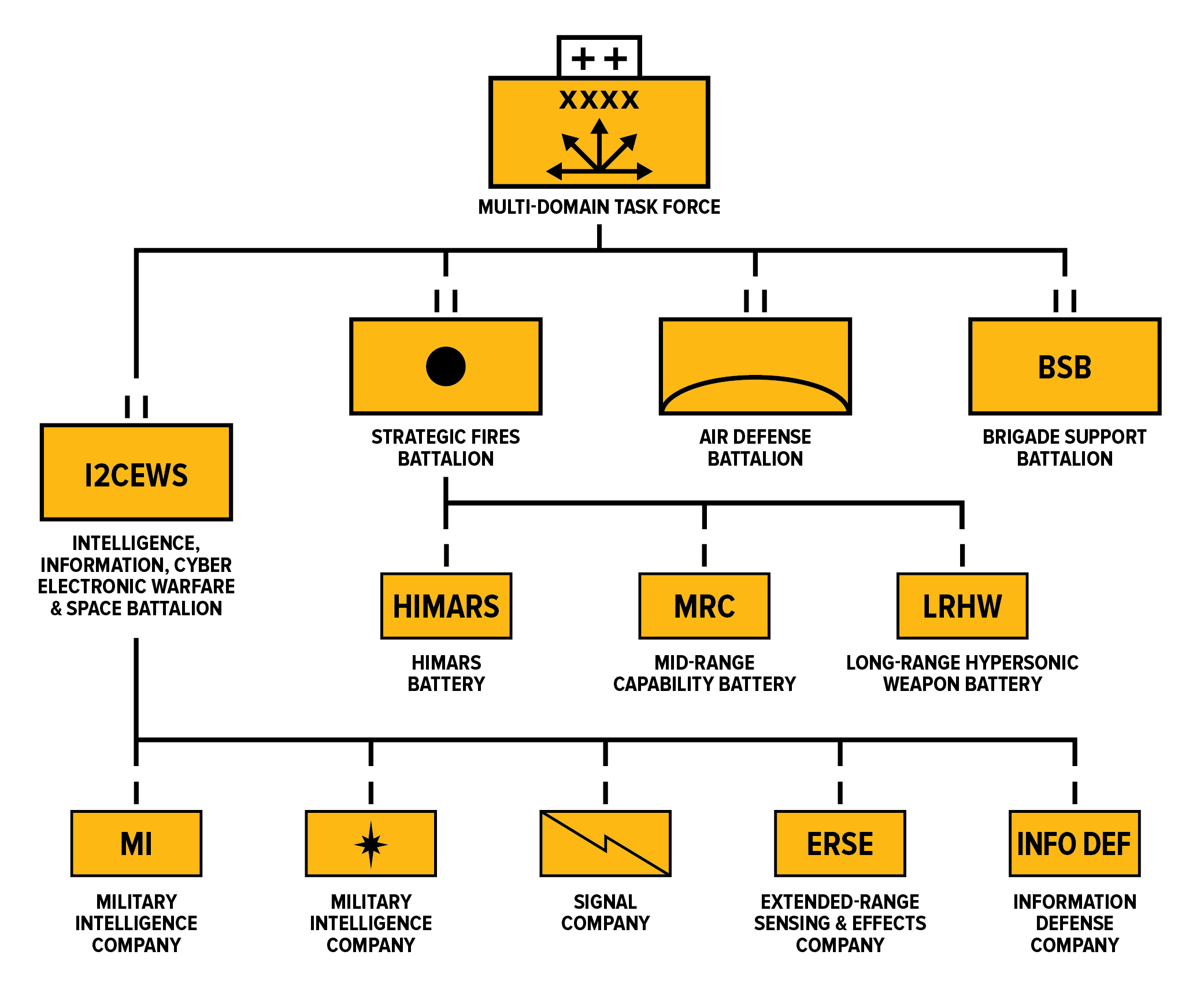
4) Air defence is a tough concept. Because it needs to be almost organic at every level. If it's not, then it's just some local area defence for HQs. As such, they'll have to come up with a structure where an AD platoon can easily get attached to a deploying battalion or an AD company to a brigade.

